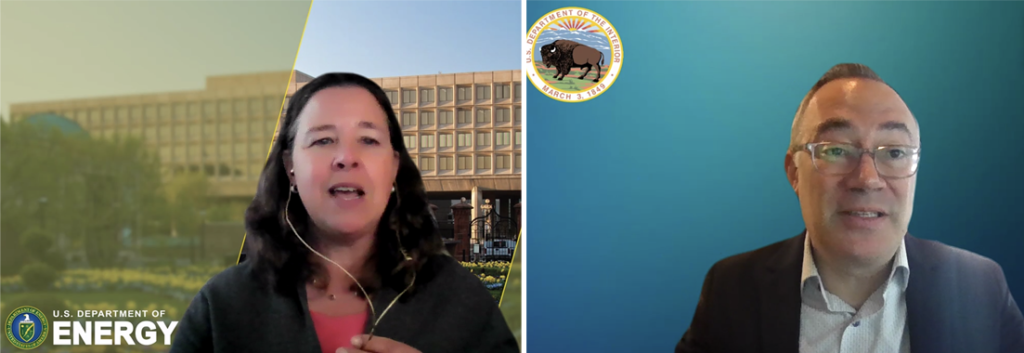Today, energy community leaders from across the nation joined representatives from the Interagency Working Group on Coal and Power Plant Communities and Economic Revitalization and the White House for a webinar focused on funding opportunities made possible through the Bipartisan Infrastructure Law (BIL) that can support projects urgently needed by many energy communities.
This virtual workshop, titled “Updated Clearinghouse Helps Energy Communities Access $100 Billion in Infrastructure Funding,” provided coal, oil and gas, and power plant community leaders with a unique opportunity to hear directly from Administration and federal agency officials on new and expanded opportunities now available to energy communities through the BIL. Specifics included how to access and apply for these investments using the IWG’s updated online clearinghouse.
The Bipartisan Infrastructure Law, which was passed in late 2021, outlines more than $100 billion in currently open and planned funding announcements relevant to energy communities. These opportunities are available across federal agencies and support projects to install broadband internet, clean up abandoned mine lands and orphaned oil and gas wells, expand domestic production of critical minerals, deliver clean water, investing in transportation infrastructure, and more.
“The Bipartisan Infrastructure Law is a historic, once-in-a-generation investment in our nation’s infrastructure and global competitiveness. To strengthen our nation and tackle the challenges the infrastructure law is addressing, we must start at the local level,” said IWG Executive Director Brian Anderson, Ph.D. “There are many programs outlined in the law that directly benefit energy communities and other parts of rural America, addressing their unique needs and supporting economic revitalization, growth and resilience.”
After providing opening remarks, Anderson was joined by White House Infrastructure Task Force Deputy Coordinator Samantha Silverberg, who gave a keynote address on the status of the BIL’s implementation plans. A demonstration of how to navigate the IWG’s clearinghouse tool and a discussion with U.S. Department of Energy Senior Advisor to Energy Secretary Jennifer Granholm Kate Gordon and U.S. Department of the Interior Deputy Assistant Secretary for Land and Minerals Management Steve Feldgus spotlighting relevant funding opportunities offered through those agencies followed.
“Today’s webinar, the online clearinghouse, and the debut of the new resources page on the IWG website are all part of IWG’s continued efforts to break down barriers energy communities often face when accessing federal funds. We want to provide local leaders with as many resources as possible to help streamline the process for finding and applying for opportunities across federal agencies and to ensure energy communities thrive for generations to come,” said Anderson.
This webinar comes on the heels of the publication of the Bipartisan Infrastructure Law guidebook, which acts as a roadmap to the funding available under the law and shows program-by-program information critical to state, local, tribal and territorial leaders and those making decisions on which programs to apply for.
Many BIL investments for energy communities are expected to be announced in the coming weeks and months and will be added to the IWG’s online clearinghouse as that happens. Launched in 2021, the clearinghouse centralizes funding opportunities from across the federal government in an easy-to-access and easy-to-navigate location that is frequently updated to keep local leaders abreast of relevant funding for their communities.
The IWG also debuted its new resources page that provides training guides, tips and tricks for applying to federal funding programs, data, and background from federal agencies intended to help energy communities submit the most comprehensive applications possible.
The webinar recording, presentation slides, and final agenda can be found here.
Established by an Executive Order during President Biden’s first week in office, the IWG is pursuing a whole-of-government approach to create good-paying union jobs, spur economic revitalization, remediate environmental degradation and support energy workers in coal, oil and gas, and power plant communities across the country as the U.S. prepares to undergo a historic energy evolution to a carbon emission-free electricity sector by 2035 and economy-wide net-zero emissions by 2050.

 )
or https:// means you’ve safely connected to
the .gov website. Share sensitive information only on official,
secure websites.
)
or https:// means you’ve safely connected to
the .gov website. Share sensitive information only on official,
secure websites.

